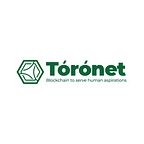How do Stablecoins Remain Stable?
Abstract
Cryptocurrency, the infamous decentralized digital asset with tremendous potential, is said to be risky due to price volatility. To some, this presents an opportunity to build wealth quickly through trading (swapping back and forth between coins and tokens to exploit price swings). However in it’s inception, cryptocurrency is meant to act as a decentralized (and anonymous) medium of exchange. Like cash, but not backed by a central bank or authority who can affect it’s value, supply, and demand at will.
For those willing to exchange goods and services for digital cash, there remains the question; “How can I do this without exposing myself to risk?”
Many believe that Stablecoins offer a viable answer; the crypto-asset class who’s value is tied to an off-chain asset. However this bring us to our question: How do Stablecoins remain stable?
Stabilization Methods
Let’s take a look at some stabilization methods that can be used to create value for this digital asset (this list is non-exhaustive):
Fiat Currency backed stablecoins (off-chain):
Fiat currency backed stablecoins are the traditional and most commonly accessible stablecoin. They became popular in 2021. As the name suggests, Fiat stablecoins act like an I-Owe You (IOU) for conventional fiat currencies. When a user makes a fiat deposit on-chain, an equivalent amount of that currency is held in an off-chain reserve.
Blockchain Protocols, may offer a selection of fiat-backed stablecoins; TòròNet Wallet users can choose between seven fiat-back stablecoins, including the $TORO (the network’s native token), to preserve the value of their digital currency. All these currencies are backed by off-chain reserves that go through a rebalancing process to ensure that no value is lost to market fluctuations and users can always access their funds immediately.
Assets/Commodity backed stablecoins:
Commodity-backed stablecoins derive their value from hard assets that exist off-chain. Assets can range from gold or oil, to even real estate.
Although price fluctuations are to be expected. Holders of these assets can feel safety in knowing that behind their investment in such an asset is a real world commodity that exists in on off-chain environment.
Commodity-backed stablecoins are not widely common, and they generate yields for investors. Users are able to access exposure to commodities trading that would otherwise be difficult to access through their digital wallets, and they can do so using cryptocurrency. Commodity-backed stablecoins allow for the tokenization of physical commodities made accessible through blockchain networks.
Examples like Paxos Gold (the most common gold-backed stablecoins), each Paxos Gold Token is linked to an ounce of London Good Delivery gold stored in an approved gold vault in London. The same process is done for assets like Tether Gold (XAUT).
Crypto Assets backed stablecoins (on-chain):
Crypto-backed stablecoins are collateralized by other cryptocurrencies (usually Bitcoin or Ethereum). They are non-custodial, which makes them transparent and decentralized. The entire process involves a smart contract rather than a central entity/reserve.
In TòròNet Wallet, users can deposit ETH in exchange for a “wrapped” Ethereum Token called 𝑡ETH (pronounced Toro-ETH). Meaning an ETH (equivalent) Token that exists on another blockchain, in this case TòròNet Blockchain. Users can do so effortlessly using the Ethereum Bridge. Learn More
Similarly, on the MakerDAO protocol, Users can access $DAI, a crypto asset-backed stablecoin created through smart contracts called Collateralized Debt Positions (CDP). A person looking to get DAI would have to deposit Ethereum into a CDP. The Ethereum would remain in the CPD until the DAI loan is repaid.
Algorithmic stablecoins:
Algorithmic stablecoins are also known as seigniorage-backed coins. Rather than being backed by reserved assets or cryptocurrency, algorithmic stablecoins are under special algorithms and smart contracts to regulate token supply.
The algorithms link a stablecoin and the fiat currency backing it, then adjust the price based on supply and demand. When the price falls, the algorithm system reduces the tokens in circulation. Alternatively, if the price rises, exceeding the currency backing it, new token assets are released to regulate the value of the stablecoin.
Conclusion
Whether a stablecoin is pegged to assets, crypto or algorithm, the goal is to maintain a fixed value over time. Although stablecoins are backed with various projects to keep them stable, there are still pros and cons attached to each type of stablecoin.
